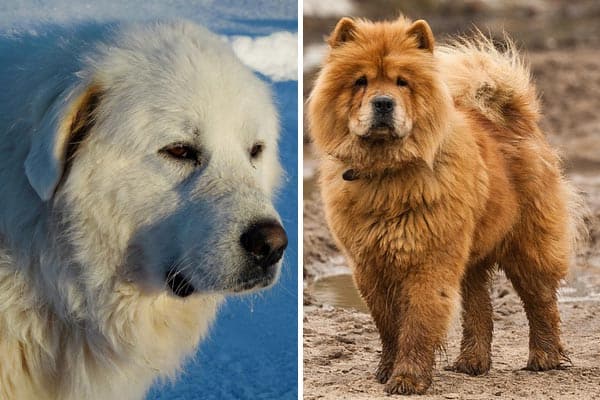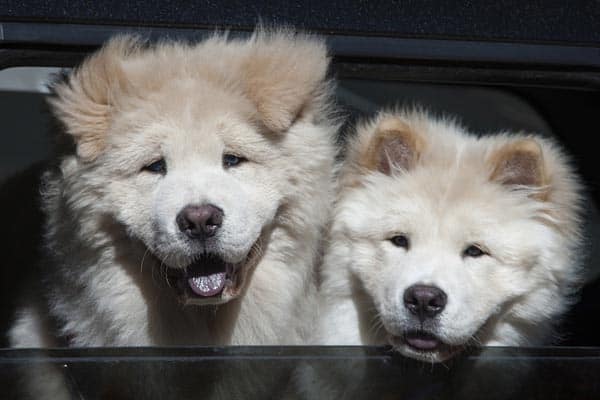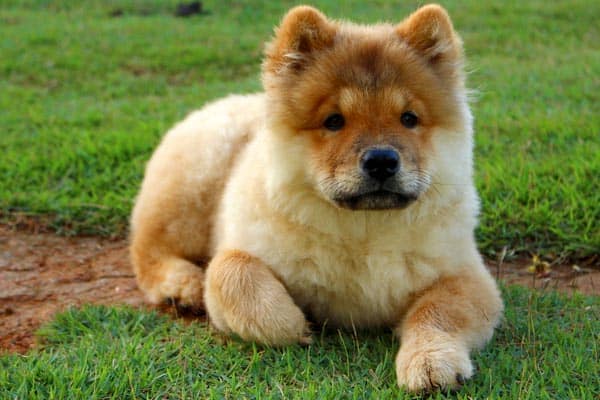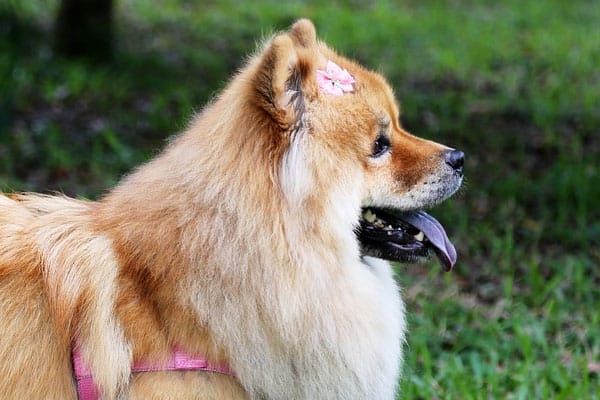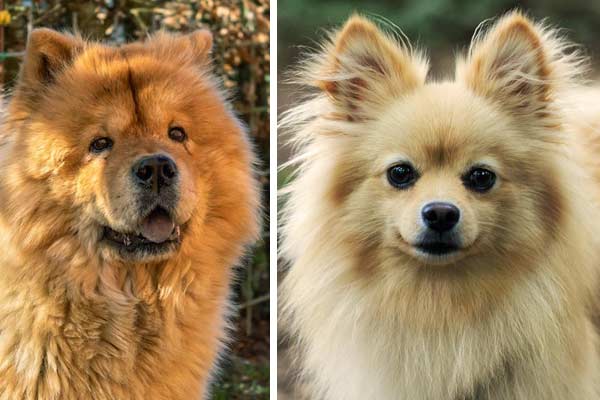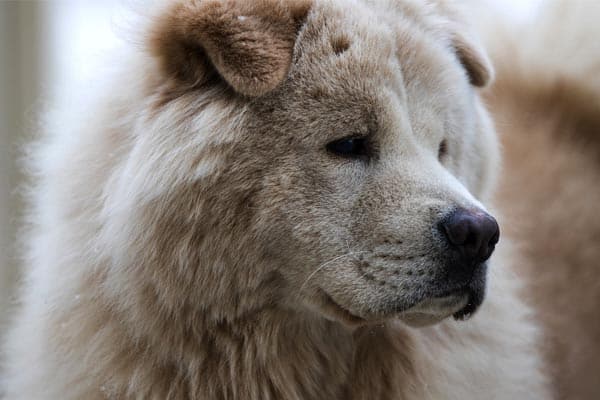Are Chow Chows Good for First Time Owners? Need-to-Know Basics
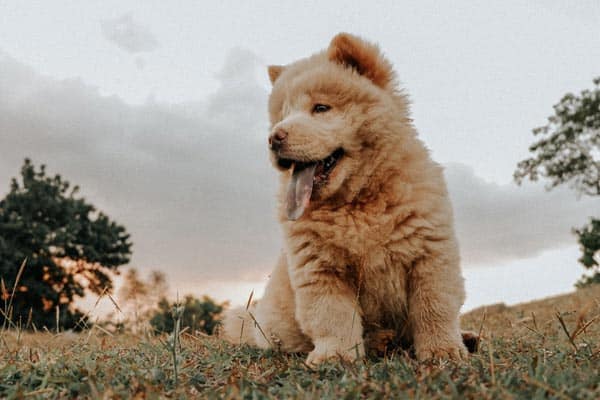
A common concern when considering the adoption of a new dog is whether the breed is good for first-time owners.
While all dogs present challenges to inexperienced owners, some dog breeds come with hurdles that are exceedingly difficult to clear.
What if after all your research you decided the Chow Chow was the best fit for you and your family?
Are Chow Chows good for first-time owners?
The short answer is Chow Chows are not ideal for first-time owners. Their trainability is among the lowest of purebred dogs tested.
Chow Chows were not often pets during their development, and owners did not cultivate many of the traits valued in companion dogs such as a willingness to please.
Moreover, Chows are an ancient breed that branched off from wolves quite early. Other difficulties you will encounter as a novice are a high-maintenance coat, health challenges, and the public perception that you own a vicious dog.
Chows are not far removed from wolves
Chow Chows are an ancient breed that had barely made the separation from wolves when they were first domesticated.
You may wonder what a close tie to wolves has to do with temperament and trainability or maybe you can guess.
One notable attempt to create a working dog by outcrossing with a wolf came well short of expectations.
Although the Czechoslovakian Wolfdog (originally Carpathian wolf x Czech German Shepherd) would eventually come into its own as a domesticated breed and military dog, its start was rough as it failed as an effective and reliable border patrol dog for the first few generations.
It had to be backcrossed with dogs to obtain more trainability and enable it to be shuffled between different handlers.
Wolf hybrids are notorious for being difficult to train and challenging their owners at every opportunity.
They are not interested in conceding to the wishes of their handlers and can become unapproachable in the face of instinctual drives concerning prey, mates, territory, fear, and pack dynamics.
Most of the basal breeds with early branching off the wolf tree exhibit poor trainability and other wolf-like characteristics. Examples besides the Chow are the Akita and Afghan Hound.
None of this is to say that Chows or any of the other breeds are wolves or even wolfdogs. They are domesticated dogs that retain some primitive characteristics. Chows possess a primitive temperament.
- Predatory
- Dog aggression
- Suspicion of people
- Territorial
- Fearful or antisocial – strange encounters trigger a flight or fight response
- Independent – they do not need people like other breeds; if you fail to establish mutual respect and give your dog a reason to bond with you, he is happy left to his own devices; this is another trait that makes primitive breeds so perplexing even among experienced dog lovers
- Use more body language than vocalizations, mouthy rather than whiny
The character element that changed the most with domestication was fearfulness. Although some family lines still display fear aggression as a serious fault, founders were largely able to convert suspicion, fear, and territoriality into guarding.
How did Chow Chows come about?
You can better understand why Chows are the way they are with a peek into their history. Their ancestors may have existed as early as 150 BC and likely originated in China or migrated therefrom the Arctic Circle, Tibet, or Mongolia.
Like most primitive domesticated canids, Chows were hunting dogs before they settled into the role of a versatile all-around farm dog.
These early Chows were much like Rottweilers, herding cattle, hauling carts to market, and guarding the farm and home. They also had outlying duties pulling sleds and were used for food in some areas.
Chows are not physically overwhelming
Chows belong to the Spitz family with relatively small erect ears, a dense double coat, and a tail that curls over the back.
Their head is large in relation to their bodies although not out of balance. Chows also have a shortened muzzle which is only about a third of the length of the skull.
The breed has a short compact body, thick muscular neck, and sturdy limbs. Defining characteristics of the Chow Chow are a blue-black tongue, mouth, and lips as well as minimal angulation at the hocks and stifles.
The Chow Chow is a medium-sized dog about the size of a Pitbull. It is 17 to 20 inches tall at the shoulders and weighs 45 to 75 or 80 pounds.
Nevertheless, the thick ruff of fur around the neck and the Chow’s strength and speed make it tough to restrain or control.
Sometimes You Can’t Teach an Old Dog New Tricks
When you see the reference to the primitive disposition of ancient breeds, it does not simply refer to close ties with wolves. It also defines the lack of behavioral evolution over thousands of years.
Chow Chows were bred to be guard and hunting dogs, and the passage of time has not managed to turn them into cuddly Teddy Bears.
You will see this even in some three-month-old puppies that curl their upper lips at the sight of a stranger.
The combination of wolf-like and ancient programmed personality traits make the Chow Chow independent, strong-willed, stubborn, fiercely protective, and dog aggressive, all especially troublesome for novice handlers.
Only if you win her respect will you get engagement from your Chow. Your Chow Chow must want to do as you ask, or you will never be able to reliably train her.
Chows also do not tend to have much of a sense of humor nor do they exhibit much playfulness into adulthood.
Therefore, they do not make great friends with young children and do not appear to have tremendous patience for them.
Finally, Chows can easily become one-person dogs even within a family and become excessively protective of that individual. They may not obey any other person.
Even in the face of such a domineering and naturally antisocial disposition, you cannot resort to force.
You must exercise patience and positive reinforcement in training your dog and should not hesitate to enlist the help of a professional if it seems warranted.
Chow Chows have fur coat challenges
Whether you acquire a smooth- or rough-coated chow, the fur is thick and dense. Both types are double-coated with an underfur of soft wool.
Smooth-coated chows have a plush but hard outer coat. They lack a ruff or mane around the neck and feathers on the legs.
Rough coats have a straight coat of long hair that stands off from the body giving them a signature fluffy appearance.
A smooth-coated chow requires brushing twice a week, but the frequency often needs to increase in the fall and spring when dogs blow their undercoats. A rough-coated Chow requires daily brushing.
What makes grooming the Chow a challenge for novices is the fact that it requires several types of brushes and a particular technique.
- Pin brush – for the outer coat
- Wire brush – often necessary for long hair or it barely gets through the top surface
- Undercoat rake – helps remove loose hair from the underfur
- Slicker brush – for the legs on a rough-haired Chow
- Metal comb – for mats that have already formed; there are also combination combs and scissors or combs with serrated teeth that help cut down mats; special shedding combs can also be effective
To a novice, a Chow’s coat can be overwhelming. One of the most important parts of your routine is to set time aside to brush your dog when you have patience, and your dog is not feeling stressed or restless.
You may want to walk your Chow Chow before you begin a long grooming session.
Daily brushing will make the job much easier and prevent mats from building up in the first place.
- Select a quiet place – can be on a grooming table or a mat, wherever you both are comfortable
- Grab your tools – brushes, combs, scissors, and nail trimmers if needed
- Place your dog on the grooming surface – secure if necessary
- Some sources like Wahl recommend dampening the hair with a mister to prevent breakage while brushing; use a product made for this as water can cause the coat to tangle further
- Comb your dog’s hair in the same direction it grows and outward from the skin to hair tips; make sure you reach the skin without touching it with your comb
- Tease out mats carefully and gently; start at the tip and work your way gradually to the base of the mat; comb outward away from your dog and give him frequent breaks
- Once your dog is tangle-free, including on the legs, use a wire brush to give a general cleansing of any loose hairs remaining in the undercoat
- Use a pin brush on shorthaired dogs for the outer coat
- Use a slicker brush on the legs and to polish the rest of your dog’s coat
- Wipe the face and eyes with a damp cloth
- Clip any stray hairs to neaten your dog’s appearance if you prefer – may include tufts around the ears, feet, and anus
There are a couple of ways an inexperienced dog owner tries to get around the Chow’s daunting coat. One option people utilize is to give their dogs a body clip.
However, be clear that shaving a Chow is never recommended except for a skin condition or severe matting that may lead to flystrike and maggots.
You will nevertheless see Chow Chows sporting lion cuts in warm climates during the summer and occasionally even year-round.
The reasons you should never shave your Chow are as follow:
- Chows are a dual-coated breed – the two layers of the coat are necessary for insulation against the cold, wind, and moisture of winter and as insulation and to move cooling currents through the undercoat in the summer
- Shaving your dog has a good chance of altering its coat forever – it is likely to grow back in a different color so your dog has unsightly patches; it may not grow back at all or not to full length in some areas, breaking up the luxurious beauty of your dog’s fur
- Both layers of the coat are necessary to protect from sunburn; even leaving a layer of the undercoat will make your dog vulnerable
- Shaving a Chow takes a long time and is bound to cause discomfort if not clipper burn (raw irritation) and cuts from handler error; also, the blades get extremely hot
Scissoring is a better option for shortening the coat to a more manageable length than shaving. Another option is to schedule a grooming appointment regularly. However, it is impractical to expect your groomer to brush your dog daily.
When you finally master the art of brushing your Chow, the next step is tackling her nails.
Chow Chows have compact cat-like feet with thick hard nails that are often brown, gray, or black. The quicks are frequently long and difficult to see.
You want to just shave off tiny slivers of the nail with each pass of the clippers, inspecting the claw head-on for evidence of the quick.
Nail trimming is a task that many owners leave to their veterinarian or groomer as it only needs attention every one to two months.
A Brief Word about Liability
The Chow’s guarding instincts and protective nature have gained the attention of insurance companies and property owners.
Some institutions deem the breed vicious or dangerous and restrict access to their products whether it be underwriting, apartments, or condos.
The main takeaways are to do your due diligence in socializing your pet and make sure you know any restrictions by leasing offices, insurance companies, or locales on the ownership of Chow Chows.
Also, realize that Chows have a reputation for aggression with the public, and it is your duty to ensure your dog does not fit that stereotype.
A Chow Chow’s health can be challenging to the inexperienced.
Some of the Chow’s health problems are common to many breeds. Hip and elbow dysplasia and eyelid abnormalities are challenges you would face with several dog varieties, some of which are great for first-time owners.
Extra eyelashes or distichiasis and glaucoma are additional problems you may witness that your veterinarian can easily help you with.
One issue that is particularly troublesome to an inexperienced owner is brachycephalic airway syndrome whereby a shortened face causes structural abnormalities such as a narrowed trachea that hinder breathing.
Chows may snort and snore and you get used to it, but it takes an educated eye to recognize when your dog is in trouble.
Chows can be more susceptible to the heat if their muzzles are too short, leading to heat exhaustion and heatstroke.
Finally, Chows are vulnerable to a condition called bloat whereby the stomach swells and twists. Prevention and recognizing the signs of this potentially fatal condition are key, and novices may not know what to look for.
The cause of bloat, also known as GDV (gastric dilatation and volvulus), is not known for certain, but some factors may play a role.
- Exercising after eating
- Playing too hard after drinking a lot of water
- Feeding on elevated bowls
- Eating too much at one meal
Preventing GDV involves one or more of the following precautions.
- Do not exercise your dog an hour before or after feeding
- Do not let your dog run after drinking a bunch of water
- Break up your dog’s food portions into two or more meals
- Feed from bowls at ground level
- Tack your dog’s stomach as a preventative – usually performed in high-risk breeds such as the Mastiff
Recognize the signs of bloat.
- Stomach or abdomen looks bloated
- Vomiting – will be unproductive if the stomach is extremely dilated or if it has started to rotate
- Retching – much more common than vomiting; the dog is unable to bring anything up with active attempts to vomit
- Pain
- Lethargy and depression
- Restlessness, distress, and pain
- Pale gums
Summary
Chow Chows can ultimately be great for first-time owners with the correct support system.
- Hire a professional trainer
- Sign your puppy up for classes at a very young age – helps with basic obedience training and people and dog socialization
- Plan on veterinary check-ups twice annually
- Hire a groomer – make an appointment at least monthly; utilize a mobile grooming service
This Video Illustrates Several Points
Note that at the beginning of the footage, Rosie the Chow has no interest in engaging with the handler. She stands with her back to the environment she does not want to engage with.
In typical Chow fashion, she fights vehemently at the end of the leash, announcing to the world that no one can force her to do anything.
At one point, the handler even has Rosie on a rabies pole, a tool to prevent a dog from getting near enough to bite you.
Eventually, Rosie is obedient and performs off-leash walking. Imagine the number of repetitions it must have taken.
Note the degree of socialization that must have occurred because Rosie is happy, engaged, and cordial with the other dog.
This is what you stand to gain from a professional trainer who can often accomplish more than you can in a much shorter period of time.
Also exercise caution, however. A primitive dog is not one that a trainer works with and hands back to the owner programmed with labeled buttons.
This owner now has a foundation but must do the work and establish that same engagement, bond, admiration, and trust that the trainer has earned with Rosie.
